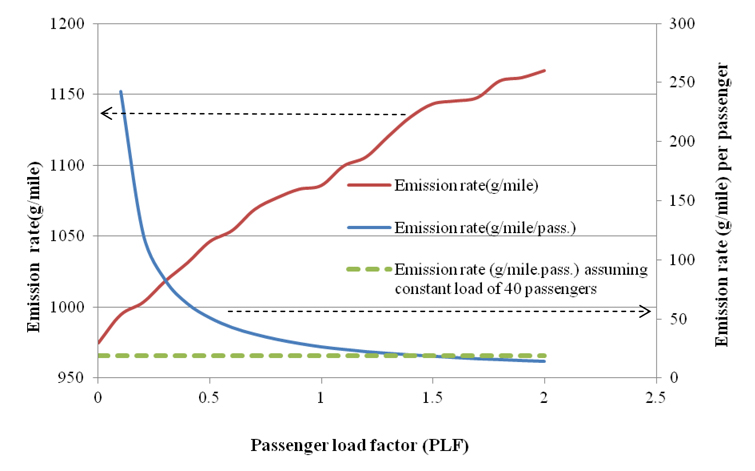| Projects | Publications |
Quantifying the effects of land-use and socio-economics on the generation of traffic emissions and individual exposure to air pollution at a metropolitan scale
This study investigates the isolated and combined effects of network congestion, roadway grade, passenger load, and fuel type on transit bus emissions of greenhouse gases (GHG) through a simulation of transit operations and emissions along a busy corridor. We also test the effect of changing random seed on the overall corridor emissions. We observe that positive grades have strong effects on emissions as well as cause other variables to become significant such as passenger load. The effects of increasing negative grades on emissions are often offset by varying the random seed in the traffic simulation. While an increasing passenger load on the bus also increases bus emissions, we observe that the addition of each passenger influences the per-passenger emissions differently depending on the bus occupancy level. Finally, the reduction potential of compressed natural gas (CNG) was found to vary across different network speeds, grades, and passenger loadings.
